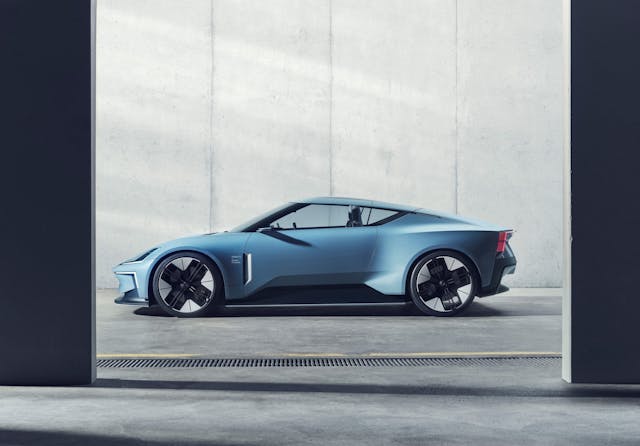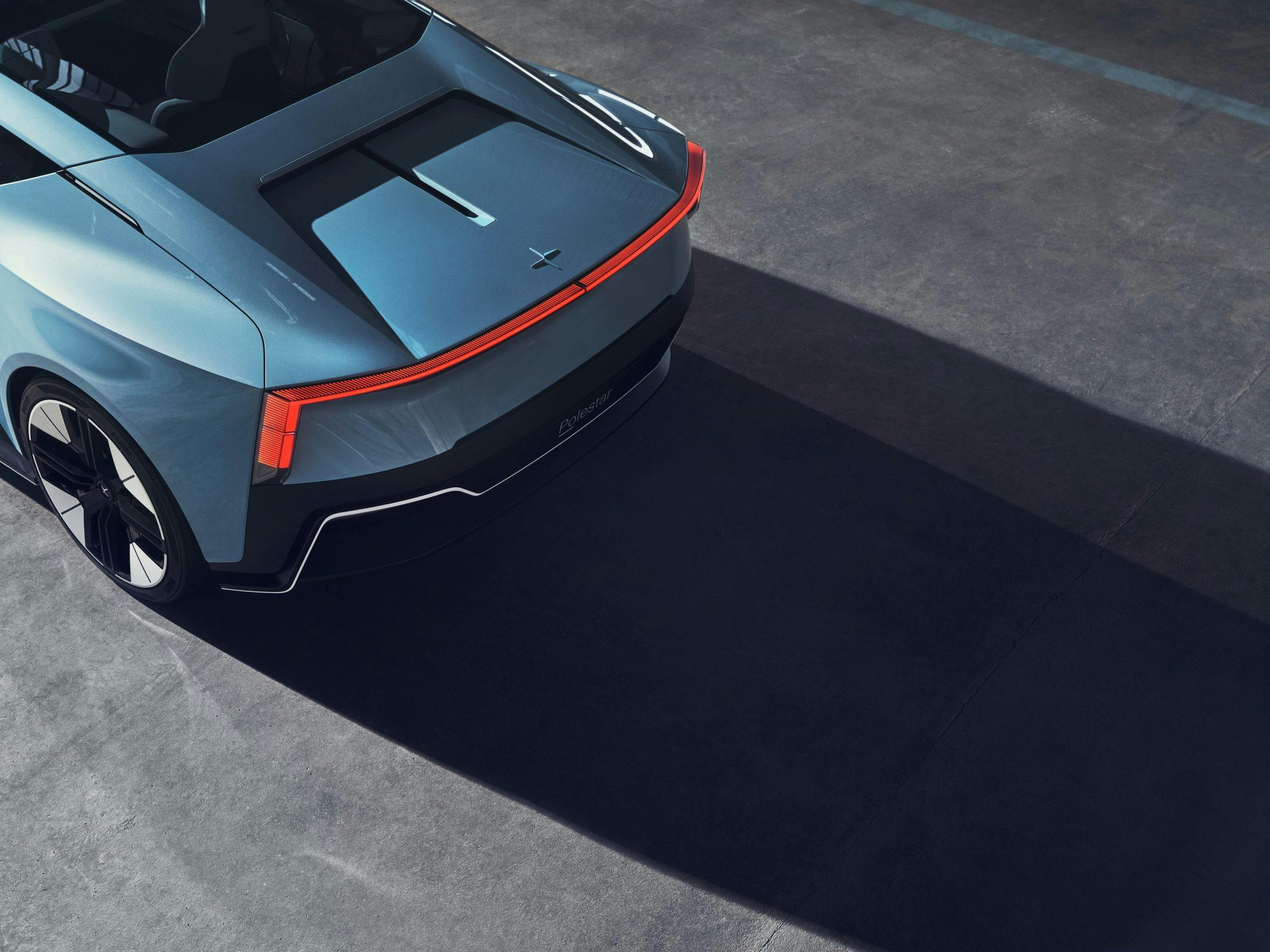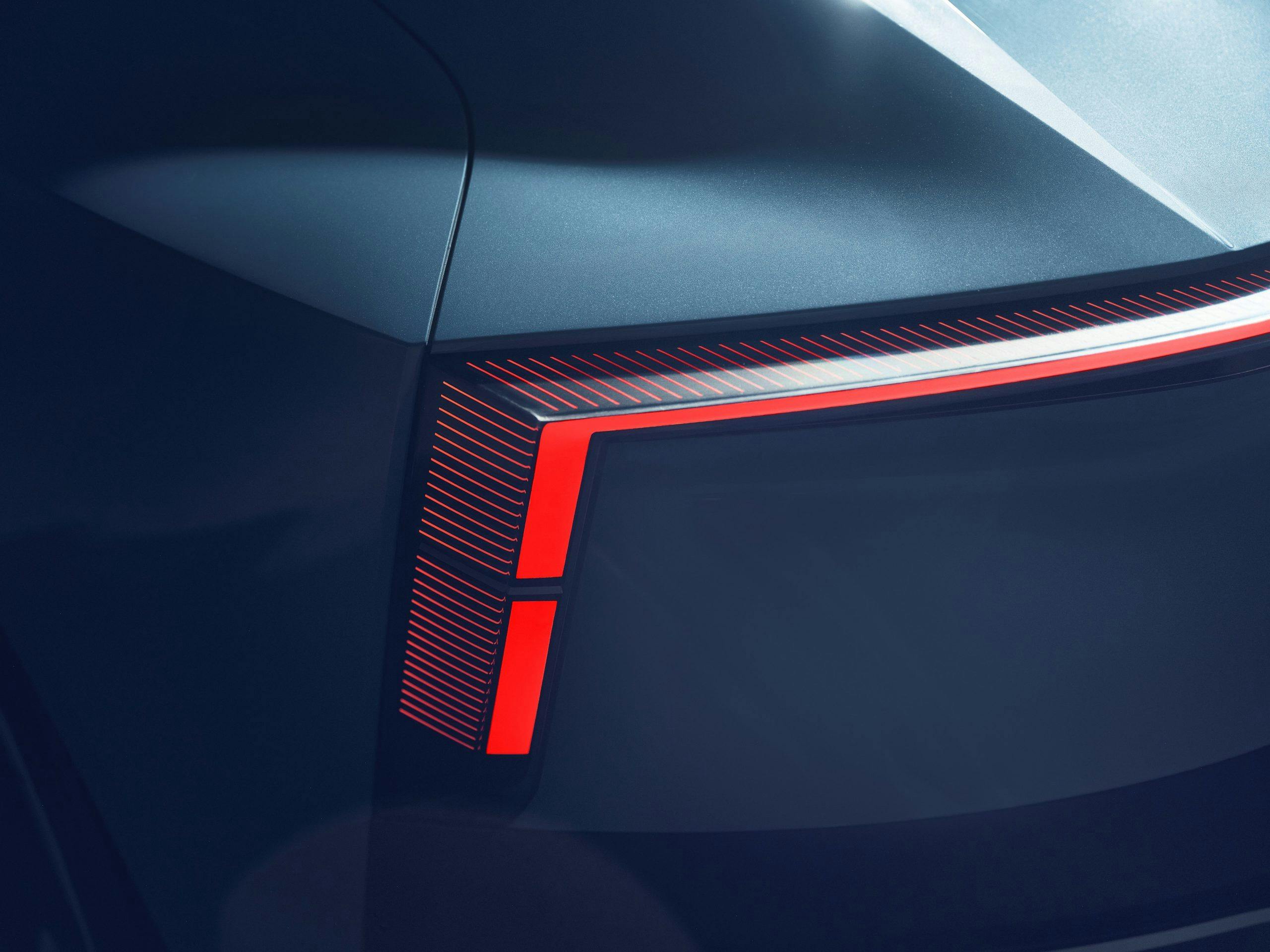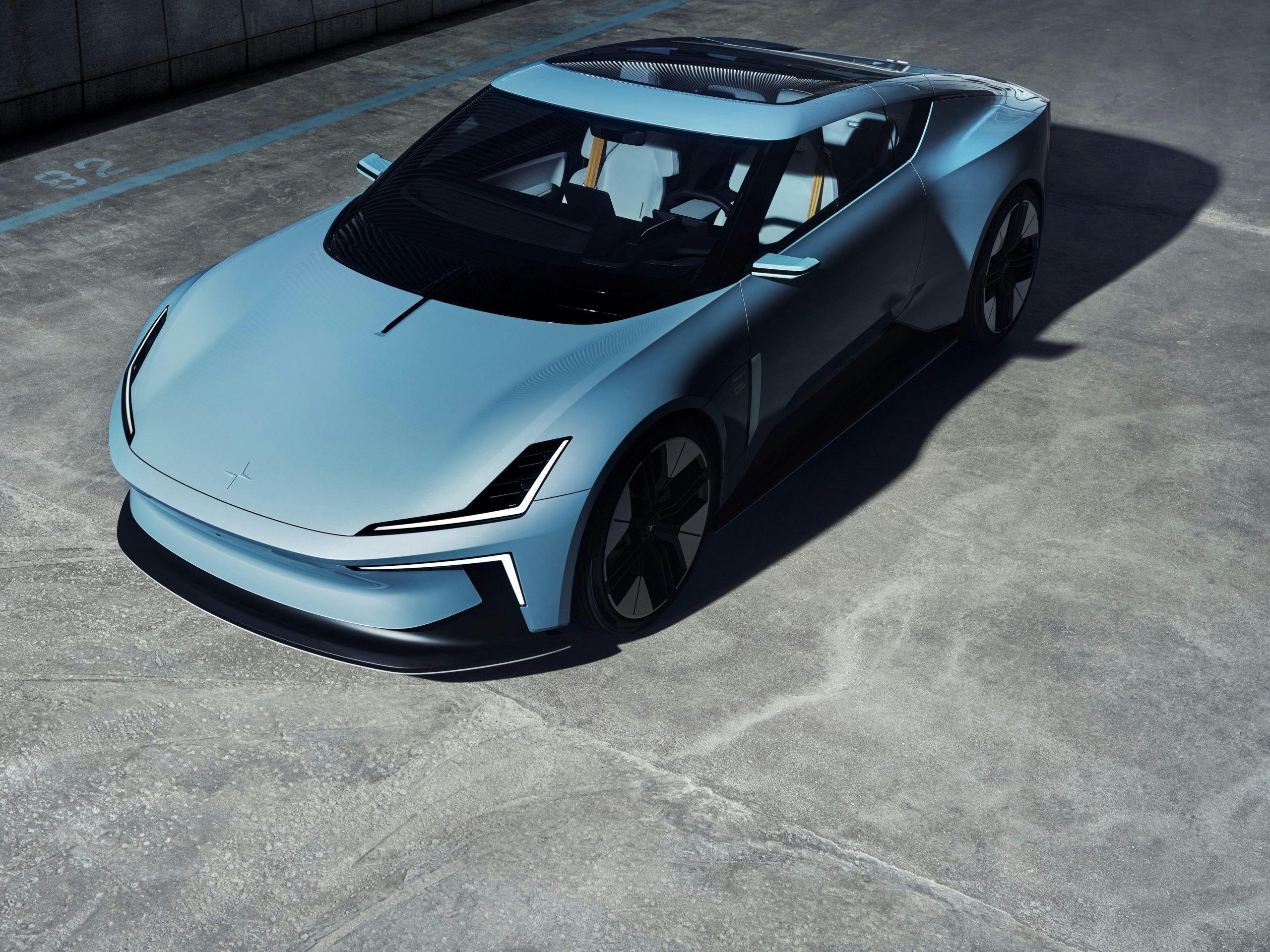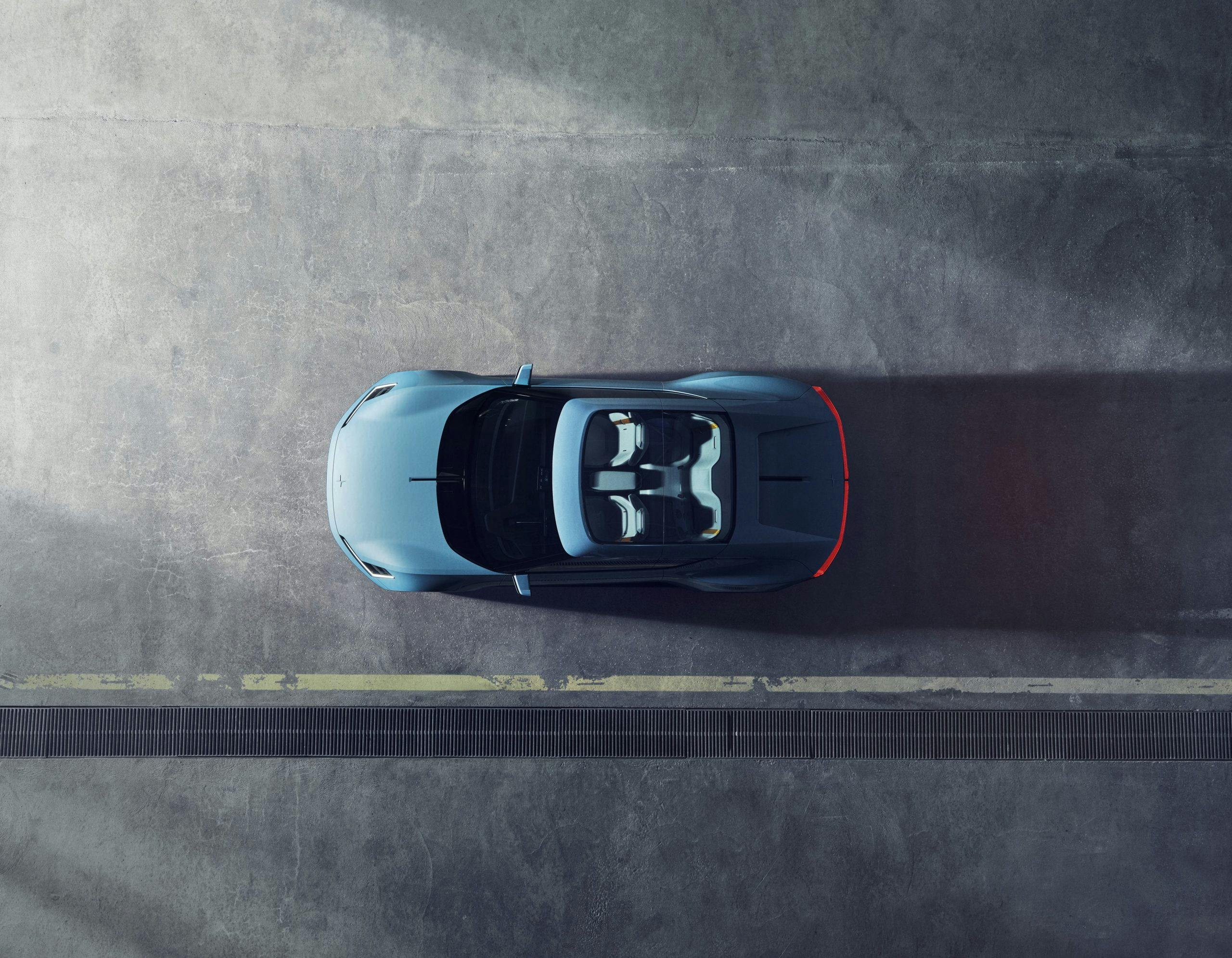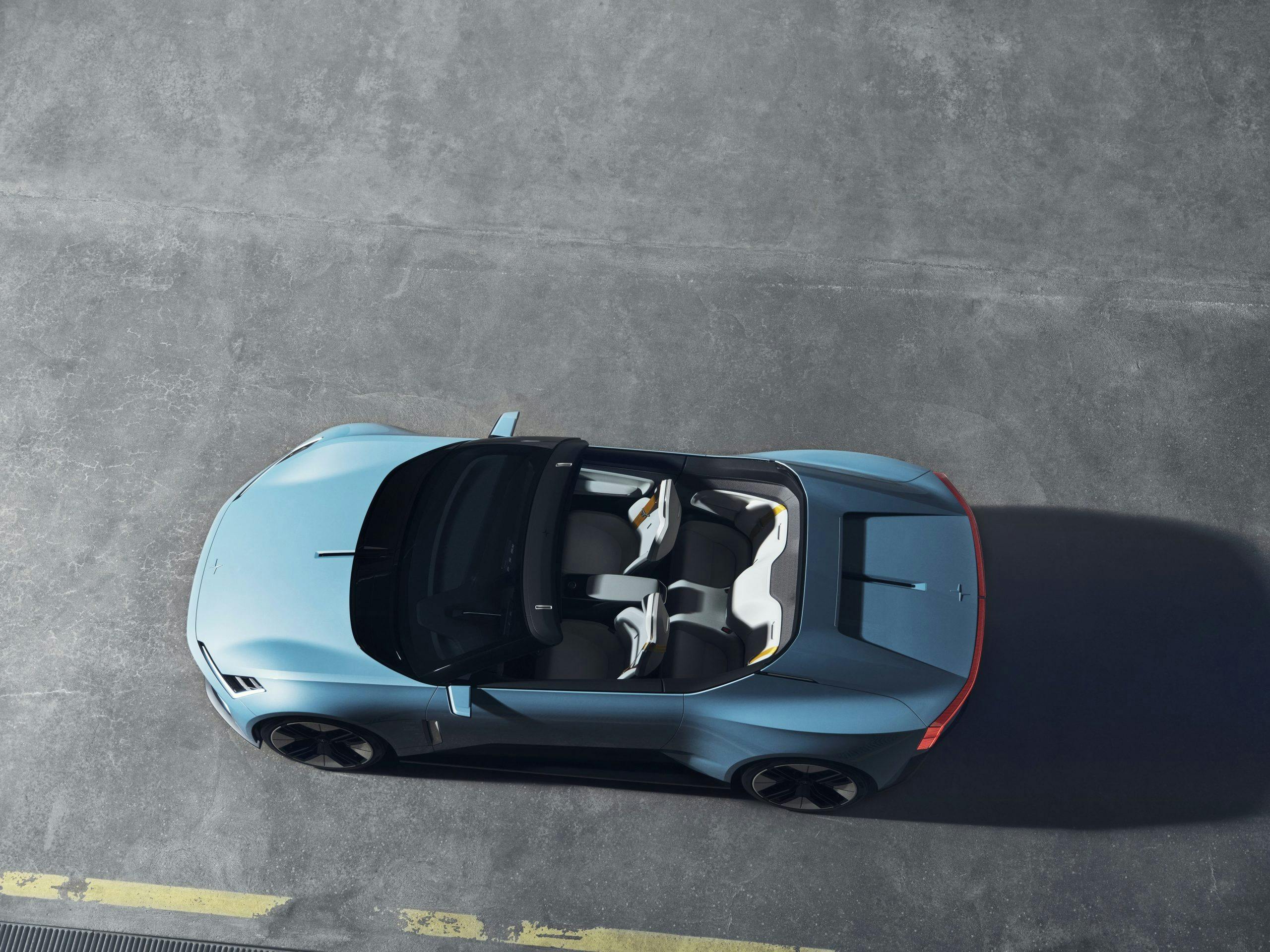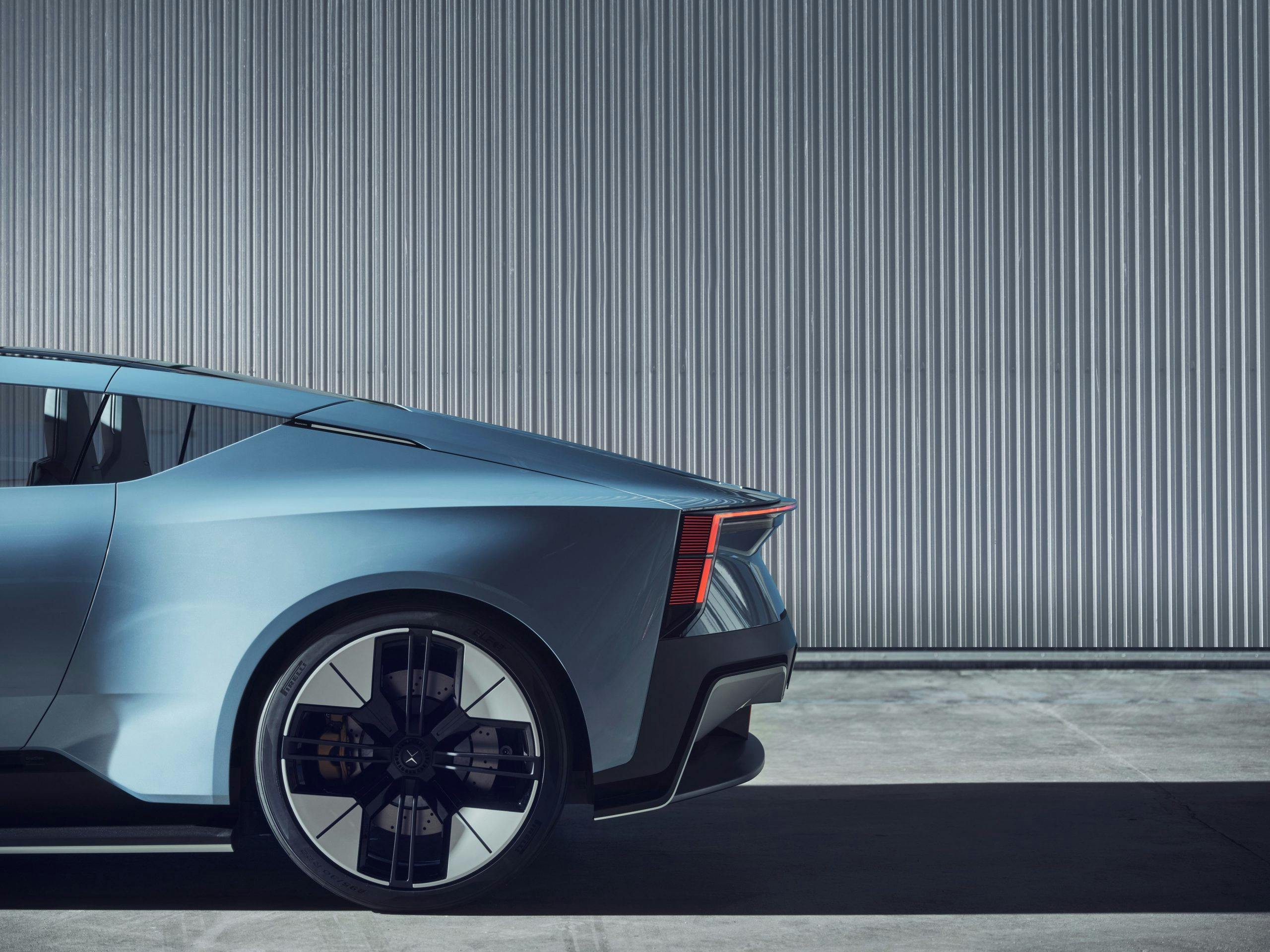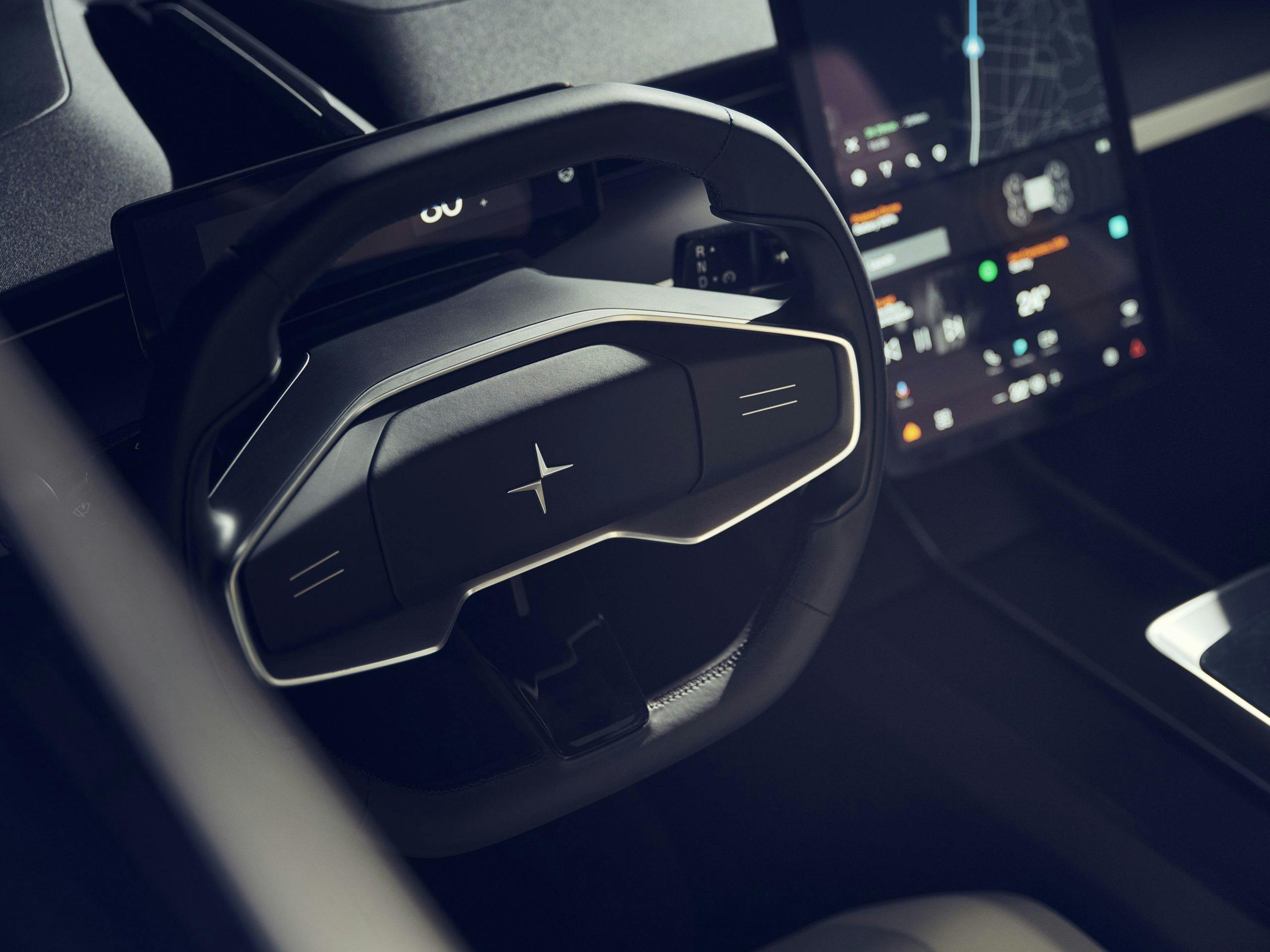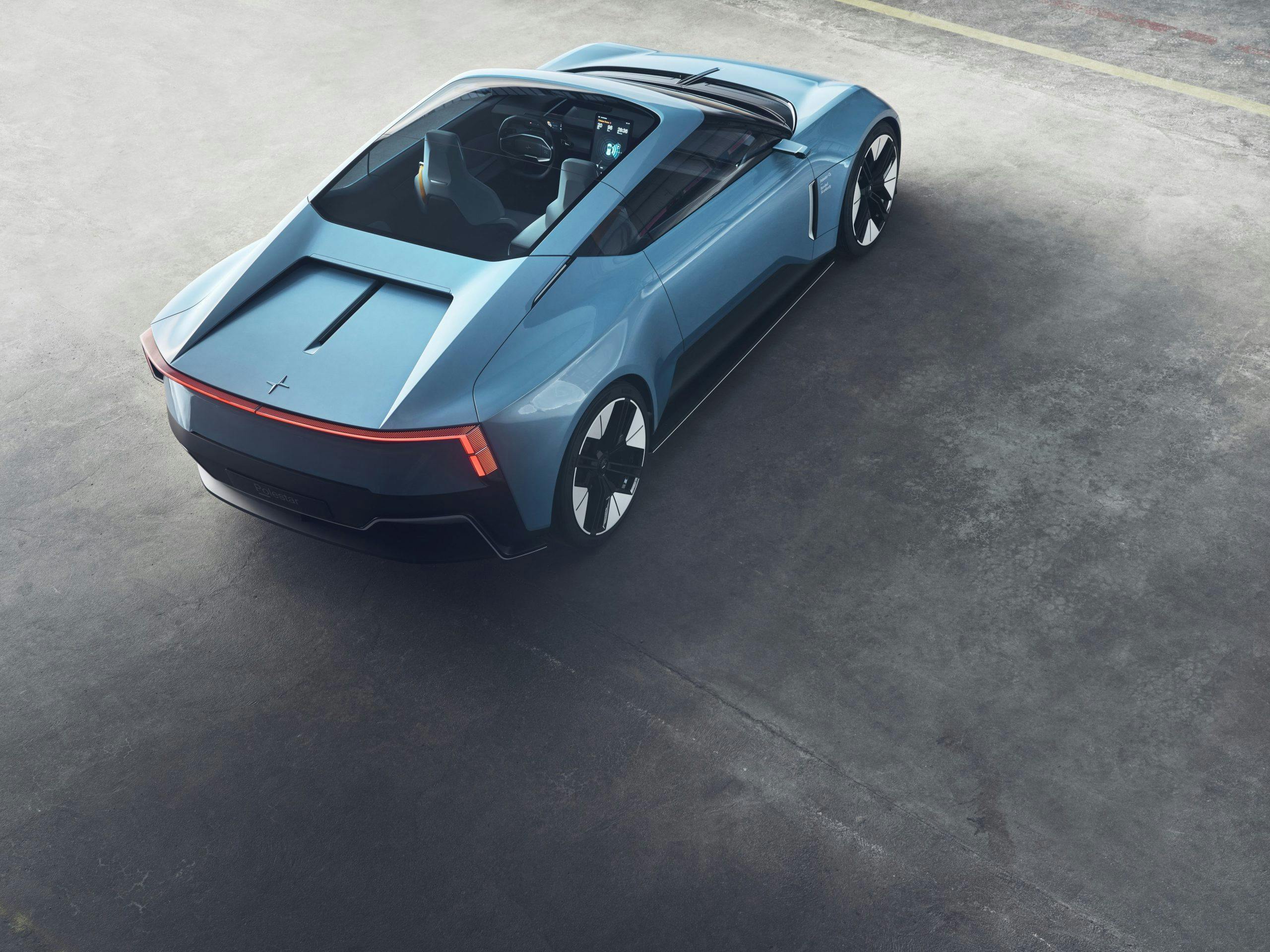Polestar’s O2 concept is a drop-dead gorgeous drop-top
Polestar is flexing the muscles on its new aluminum platform with a new concept, and it’s a beauty. This sporty hardtop convertible, the O2, is a sharp-edged, neatly styled 2+2 GT car with serious presence.

We recently had a chance to behold the Polestar Precept sedan concept in person and the O2 clearly holds some family resemblance—a good thing. The taut lines and flared haunches evoke classic GT lines, while the short overhangs and angular top are clearly modern. Polestar is taking advantage of its new aluminum platform that will underpin its upcoming flagship sedan and shortened it for the O2.
We spoke with Maximilian Missoni, Polestar’s Head of Design, who explained that the Precept and the O2 were both designed with the same battery pack in mind. With the upcoming all-electric 5 sedan (whose basis is the Precept concept), the battery placement allows for the rear footwell to drop down for extra rear passenger room. For the O2, which is a 2+2 EV whose rear seats are meant more for car seats and small children, the wheelbase has been shortened by the length of that rear passenger footwell.
The fact that it’s a 2+2 also let Missoni give the car traditional GT lines like dramatically flared fenders and quarter panels. “That’s how it should be. That’s the good thing about these cars, you’re not so constrained with interior space because it’s all about driving dynamics.”
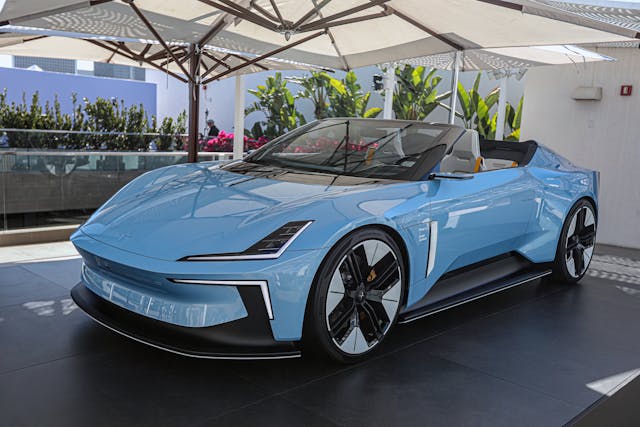
While there’s quite a lot of Precept DNA in the O2, the GT concept has a different take on the front-end sheet metal, with a noticeably lower hood line. Like the Precept, the O2 houses SmartZone sensors for Level IV autonomy behind the front fascia. It also has split lighting elements that were inspired by Thor’s hammer and will become a defining feature for the brand. Mirroring the black upper element of the headlight that houses the beams is a cleverly sculpted air duct that channels air over the wheel openings for improved efficiency. Likewise, the taillights serve to reduce turbulence as the car cuts through the air.
“We are evolving this design language. I think we have achieved, design language-wise, this kind of shark-nosed treatment and precise lines . . . that is unique for Polestar.”—Maximilian Missoni, Polestar Head of Design
Because the O2 is envisioned for top-down driving among beautiful scenery, Polestar has given the concept an autonomous video drone, from a company called Hoco Flow, that can be deployed from behind the rear seats where it’s protected from buffeting. The location allows the drone to launch and land while the car is moving and it can follow along at speeds up to 56 mph.
“We wanted to emphasize the experience you can have with a car like the Polestar O2 in new and unusual ways,” continued Missoni. “Integrating an autonomous cinematic drone was something that allowed us to push the boundaries on the innovation front. Not needing to stop and off-load the drone before filming, but rather deploying it at speed, is a key benefit to this innovative design.”
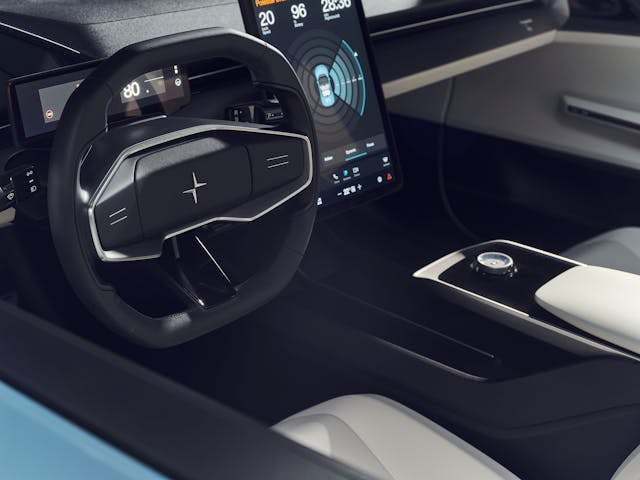
Just as the Precept concept will become the Polestar 5, expect a production version of the O2 concept to eventually get the green light. While the 5 may be the official flagship of the brand, this drop-top could easily become the halo as its classic GT packaging is right at home with Polestar’s design language. Now we’ll just have to see if its battery and motor performance can match the performance that the car’s design all but promises.
